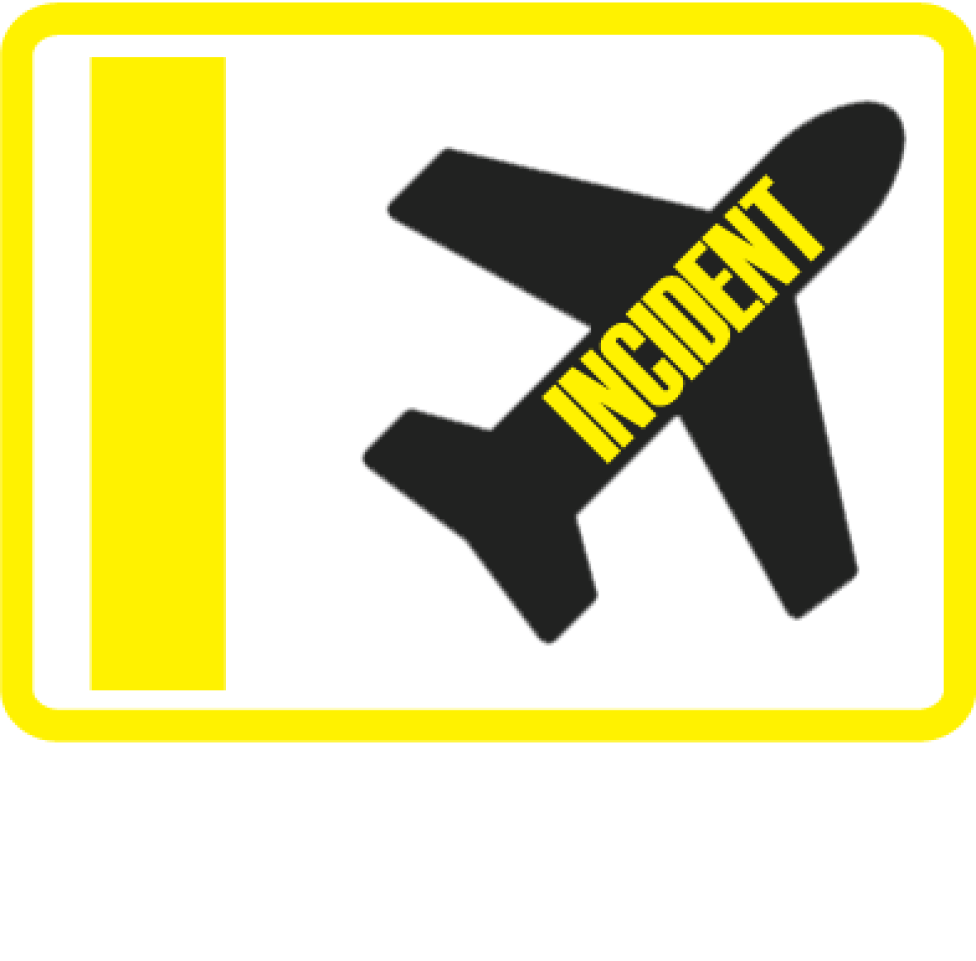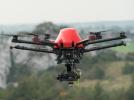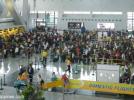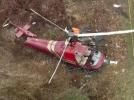Malaysia B744 near London on Aug 17th 2012, engine shut down in flight
A Malaysia Airlines Boeing 747-400, registration 9M-MPL performing flight MH-1 from London Heathrow,EN (UK) to Kuala Lumpur (Malaysia) with 340 passengers and 22 crew, was climbing out of Heathrow's runway 09R when the #2 engine (PW4056, inboard left hand) experienced technical problems prompting the crew to level off at FL190 and return to London for a safe landing on Heathrow's runway 09R about 90 minutes after departure.
Passengers reported the engine failed about 20 minutes into the flight.
On Sep 11th 2012 the French BEA reported in their weekly bulletin that during climb through about FL190 vibrations were felt throughout the airframe, cabin crew reported sparks were seen from the tail pipe of engine #2. The crew shut engine #2 down, dumped fuel and returned to Heathrow. During the final approach, while descending through about 426 feet radio altitude, both autopilot and autothrust dropped offline and all 6 flight deck screens began to intermittently flicker/flash at about 1 second interval. The crew completed the approach visually for a safe landing, after touch down all displays returned to normal. The AAIB is investigating.
On Apr 10th 2014 the British AAIB released their final report within their monthly bulletin concluding:
The intermittent blanking of the flightdeck displays, the complete loss of power to AC Bus 2 and the resultant degradation of multiple aircraft systems were caused by a latent hardware fault on BTB 3, in combination the following factors:
- the failure of No 2 engine, which lead to IDG 2 being offline
- configuration of the electrical system for an autoland
- nuisance difference current protection BTB trips by GCU 1 and 4
The investigation determined that the nuisance difference current protection trips could have been caused by the mechanical failure of BTB 3, high resistance in the difference current loop or a combination of both conditions.
The AAIB reported that the aircraft was climbing through FL150 when the crew noticed vibrations of the airframe. All cockpit indications were normal except for the engine #2 vibrations showing a value of 2.3 (dimensionless) with the other engines showing vibration levels of 0.9. The commander disconnected the autopilot, checked the flight controls and re-engaged the autopilot. Climbing through FL170 the crew noticed the vibrations had increased and the fuel flow of engine #2 was fluctuating at about 0.3 tonnes per hour with the other engines indicating steady 5 tonnes per hour. The crew reduced the engine #2 to idle, which reduced the vibrations, the oil pressure of engine #2 exceeded the limits however followed by a BANG and an EICAS "ENG FAIL" message. The crew shut the engine down, levelled off at FL190 and decided to return to Heathrow. The aircraft dumped fuel.
After about 45 minutes of dumping fuel the aircraft began its approach to Heathrow's runway 09R with the left hand autopilot engaged. The crew intended and prepared to perform an autoland at Heathrow's runway. While descending through 3200 feet the aircraft intercepted the localizer and the crew engaged the other two autopilots for the autoland. Shortly after the aircraft levelled off at 3000 feet the master warning activated, all three autopilots disengaged, all displays and cockpit lights began to flicker and a large number of failure messages appeared. The captain assumed manual control of the aircraft and continued the approach, about 30 seconds later, when the aircraft intercepted the glideslope, autothrust disengaged.
The crew decided that with the runway in sight it was safer to continue the approach and land rather than to manage the failure messages over concerns the displays might fail completely. All displays and lights continued to flicker simultaneously until after touch down, the stand by instruments remained unaffected.
The commander did not recall any automatic height call outs except for the 20 feet call out. The AAIB stated: "He therefore did not have sufficient warning to flare the aircraft into the correct landing attitude prior to touchdown. The co-pilot stated subsequently that the radio altimeter indication and “rising runway3” indication were missing from his Primary Flight Display (PFD) during the landing." The captain reported a hard landing in the tech log of the aircraft.
The flight data recorder revealed that the oil temperature of engine #2 began to rise markedly when the aircraft climbed through FL130, and a step increase in the vibrations of the N2 spool of engine #2 was recorded.
All four AC electrical busses remained powered until the aircraft had levelled off at 3000 feet on approach with all three autopilots engaged for autoland. Then AC bus #2 indicated a momentary loss of power, together with the master caution and disconnection of all autopilots. The crew intercepted the glideslope, lowered the landing gear and selected flaps to 20 degrees, about 24 seconds later autothrust disengaged. Flaps were further selected to 25 and 30 degrees.
At 426 feet AGL, 35 seconds prior to touch down, AC bus #2 lost power and remained unpowered until after landing. The AAIB reported: "Following the loss of AC Bus 2, some other parameters showed anomalies: hydraulic system 2 indicated low pressure and the recorded positions of the left inner and left outer trailing edge flaps changed instantaneously to zero. Seventeen seconds later the lower yaw damper also reported a fault."
The aircraft touched down at 155 KIAS and a vertical acceleration of +1.41G, the aircraft rolled out and vacated the runway. After the aircraft came to a stop at the apron, AC bus #2 powered on again.
A preliminary examination of the aircraft after landing showed engine #2 had metallic debris in the engine's tail pipe, there was metallic debris also on the magnetic chip detector and the number 3 bearing magnetic chip detector. The aircraft had "also sustained damage to the keel beam during the hard landing".
The AAIB reported with respect to the Bus Tie Breaker #3: "When voltage was applied to command the BTB to trip, only some of the main and auxiliary contacts transitioned to the expected positions. This resulted in the contactor being in an intermediate state, which did not correspond to either the tripped or the closed condition. When voltage was then applied to command the BTB to close, it did not change state. However when the BTB was subjected to a light external impact on the outer case, the contacts moved and it returned to the closed state. Repeated testing confirmed that it was not possible to predict which contacts would move to the expected positions when the BTB was commanded to trip or close."
The AAIB continued: "After removal of the BTB outer housing, a nut on one of the armature guide posts was found not properly secured, causing the armature to be misaligned. Loctite was evident on the nut and threads of the guide post, in accordance with the design. The lock washers on both guide posts had been compressed, as designed, when the nuts were tightened. This suggests either that the nut had backed off over time, perhaps due to airframe vibration, or that the contactor had been disassembled at some point after original assembly. The BTB manufacturer was not aware of any previous cases of the guide post nut loosening in service. The manufacturing drawing did not specify a torque requirement for the nut. Examination of the main contacts revealed that they exhibited very little wear for a unit of its age (14 years), although there were indications that the contacts had been filed or buffed at some point after manufacture. BTB 3 had been installed on the aircraft since delivery and the component history records indicated that it had never been removed or overhauled. After tightening the loose nut and replacing the washers, the contactor operated correctly."
The AAIB analysed: "Examination of the No 2 engine revealed that spalling of the abradable ceramic coating on the HPT 2nd stage BOAS resulted in a portion of the BOAS being released and impacting the HPT 2nd stage blades. This initiated a fatigue fracture in HPT 2nd stage Blade No 33. Subsequent damage from the liberated blade resulted in imbalance of the high speed rotor, leading to the engine vibration and necessitating shutdown of the engine."
The AAIB analysed: when the autoland was being engaged the electrical systems needed to rearrange automatically, isolating AC-busses 1 and 3 while AC-bus #2 would be supplied from AC-bus #4 via the sync bus. The AAIB stated: "Eleven seconds later, BTB 4 tripped because Difference Current Protection isolated AC Bus 4 from the sync bus. Momentary power interruptions to AC Bus 2 and the First Officer’s Transfer Bus were recorded. As three independent power supplies could no longer be assured the autoland operation was cancelled, indicated by the ‘bus control unit / fcc-c fail’ and ‘bus contro l unit / fcc-l fail’ faults. BTB 1 and 3 were commanded to return to their previous position and AC Bus 2 then became re-powered."
Three minutes later BTB #1 tripped due to Difference Current Protection and power on AC bus #2 was lost although BTB #3 was commanded closed indicating, that the bus tie breaker #3's contacts had not correctly closed.
The AAIB analysed that it was not possible to reproduce or simulate the flicker of the cockpit displays. However, three switchovers could have caused temporary blanking of the first officer's instruments, it was possible that fluctuating voltage on one or more phases of AC-bus #3, main source for the captain's instruments, caused power oscillations on the captain's transfer bus. "Fluctuating voltage on AC Bus 3 is also the most likely explanation for the flickering of the cockpit lights, many of which are powered by AC Bus 3."
The AAIB analysed: "The flight crew reported that flickering of the displays and cockpit lights stopped after landing. It is possible that the firm landing caused some of the BTB 3 contacts to be re-seated."
The bus tie breaker #3 at fault, the loosened nut marked (Photo: AAIB):
Schematics of the electrical busses and bus tie status (Graphics: AAIB/Boeing):
http://avherald.com/h?article=4547602e














Komentarze